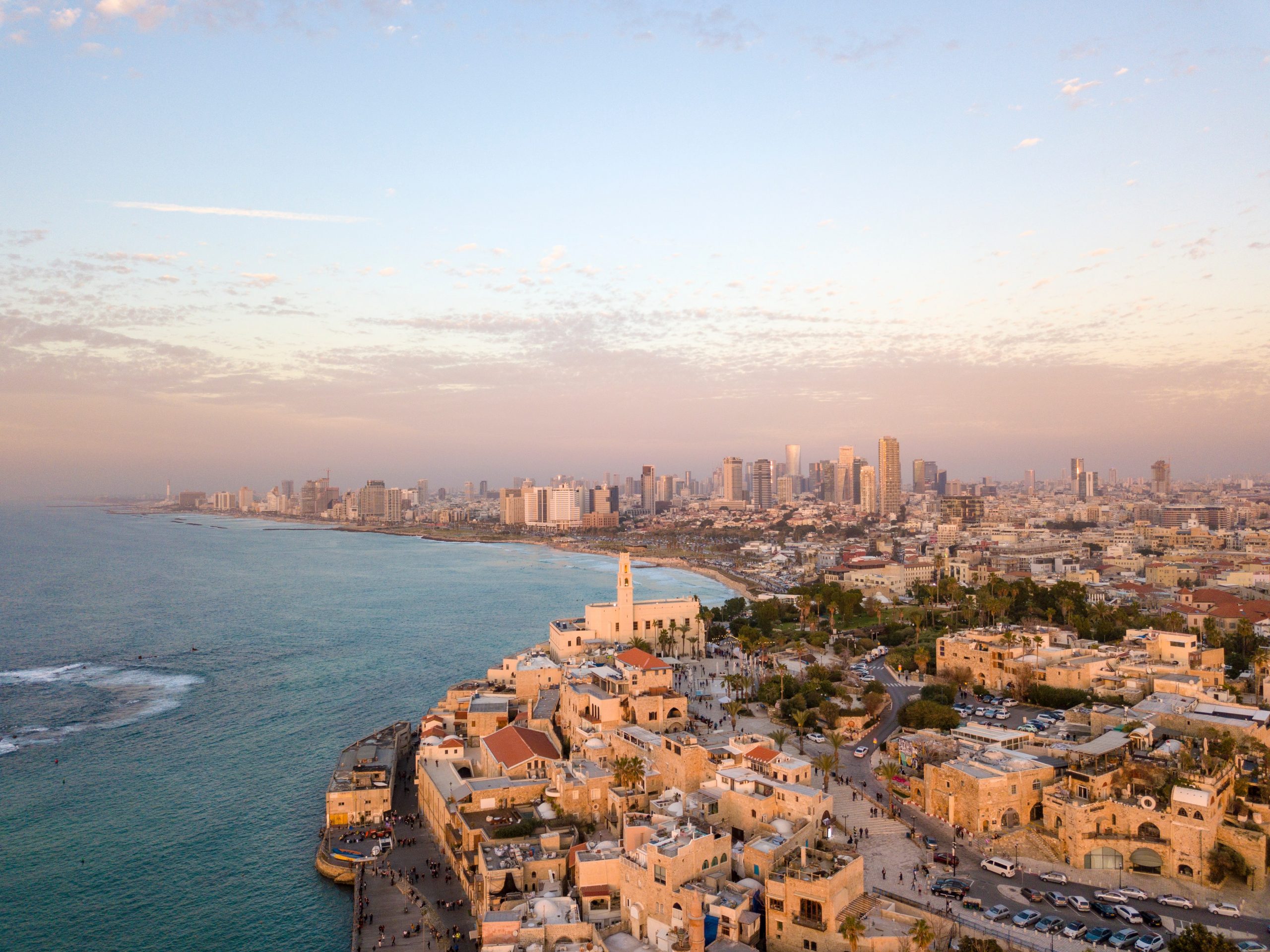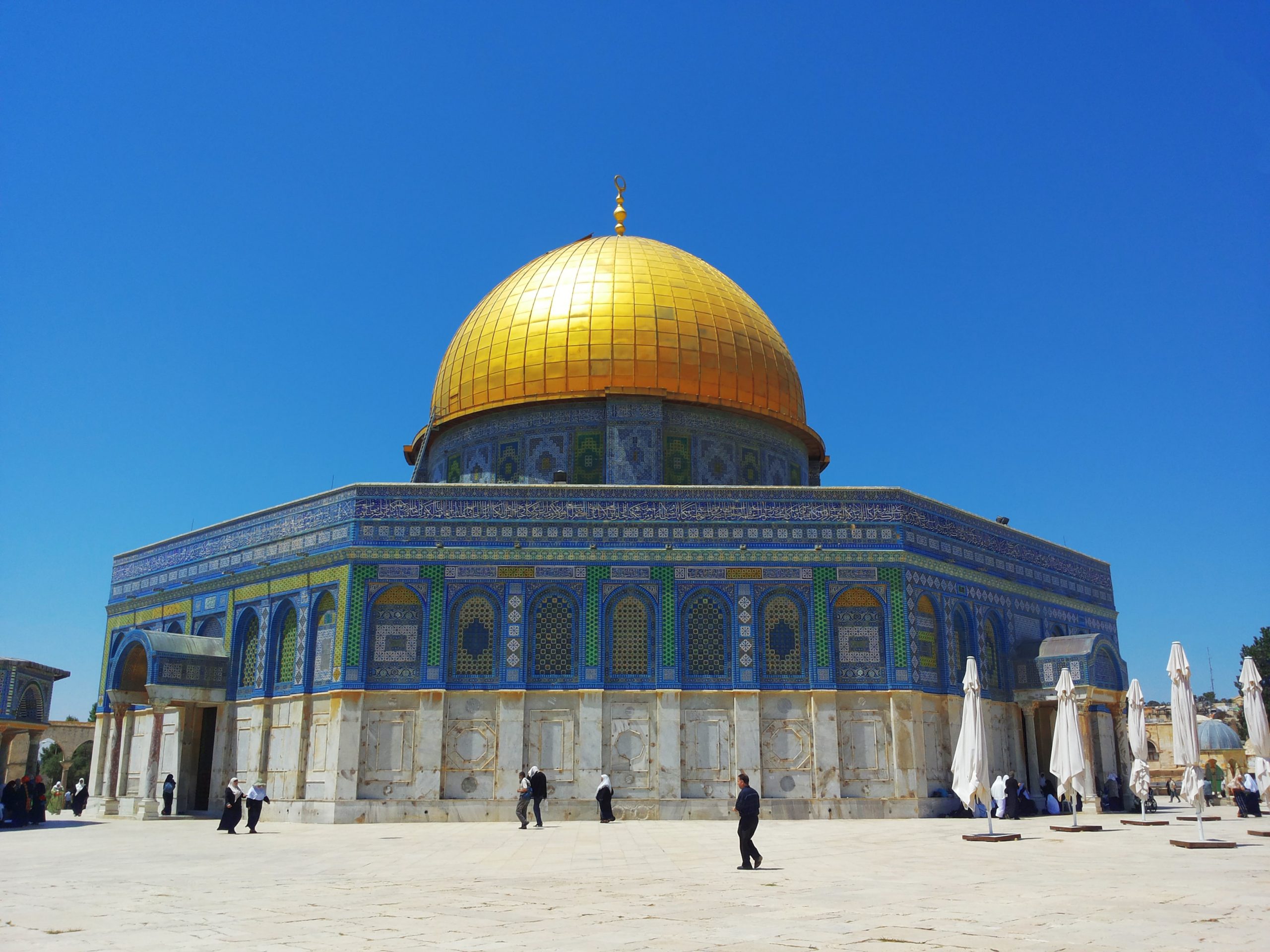15 North Africa & the Middle East: Historical Geography I –
Palestine and Israel
“Men and nations behave wisely once they have exhausted all the other alternatives.”
– Abba Eban, Israeli diplomat and politician

In the Middle East, along the eastern shores of the Mediterranean Sea, lies a region historically known as Palestine. It occupies about 11,000 square miles – slightly larger than Massachusetts. Over the last century, it has become one of the most violently contested places on earth. Two cultural groups, the Israelis and the Palestinians, claim this area as their rightful homeland. The Israelis are the descendants of Jews who were forced from their homeland by the Romans in the 1st century CE, an event known as the Diaspora (see Chapter 13). The Palestinians are a largely Arab and Muslim population who have occupied Palestine for centuries. Palestine’s modern geography began to take shape in the late 1800s with the emergence of Zionist movement in Europe. European Jews, having faced centuries of persecution in exile, began to purchase land in Palestine, which was then controlled by the Ottoman Empire.
The conflict in Palestine has long been mischaracterized as a centuries-old religious war. In fact, the Palestinians and the Jewish settlers mostly lived peacefully alongside one another during the early decades of the Zionist movement. Serious tensions between the Israeli settlers and their Palestinian neighbors began to develop in the wake of World War I, when the defeated Ottoman Empire ceded Palestine to the British. During the war, Britain made a series of conflicting agreements regarding the future of Palestine. The Hussein-McMahon Correspondence (1915) was a British guarantee that, in exchange for Arab support in the war against the Ottomans, the Palestinians would be granted an independent state. The Balfour Declaration (1917) was a separate agreement that guaranteed a Jewish homeland in Palestine. At the same time, the Sykes-Picot Agreement (1915) set a course for the British and French colonization of Arab lands seized from the Ottomans.
Throughout the 1920s and 1930s, violent incidents between Israelis and Palestinians increased as Jewish migration to Palestine continued. Following World War II, the victorious Western powers were searching for a place to resettle European Jews who had survived the Holocaust. Although a number of refugees made their way to Britain, France, and the Americas, no single country was willing to offer unlimited sanctuary to Europe’s displaced Jews, so many of them migrated to Palestine. By 1946, the Jewish settlers were already arming themselves in preparation for a war. The Palestinians and their Arab neighbors fiercely objected to Western support for a potential Jewish state, viewing it as a form of European colonization. The Palestinians were justifiably afraid that they would lose claims to land they’d occupied for generations, and that they would be denied a political voice in a largely Jewish state. But the Palestinians lacked leverage with the major Western powers, where political sentiment largely rested with the Jews in the wake of the Holocaust.
 In 1947, the United Nations authorized the formation of two new states in the area – a Jewish state known as Israel, and an Arab state known as Palestine. The Palestinians would control northern Palestine, a large area along the Jordan River known as the West Bank, and an area in southwestern Palestine known as Gaza. The remainder of Palestine would be governed by Israel, except for the sacred city of Jerusalem, which was to be governed directly by the United Nations. In 1948, the British formally withdrew from Palestine, and Israel declared independence. The Palestinians, along with many of their Arab neighbors, refused to recognize the legitimacy of Israel. Within hours of the British withdrawal, a war for the control of Palestine had begun.
In 1947, the United Nations authorized the formation of two new states in the area – a Jewish state known as Israel, and an Arab state known as Palestine. The Palestinians would control northern Palestine, a large area along the Jordan River known as the West Bank, and an area in southwestern Palestine known as Gaza. The remainder of Palestine would be governed by Israel, except for the sacred city of Jerusalem, which was to be governed directly by the United Nations. In 1948, the British formally withdrew from Palestine, and Israel declared independence. The Palestinians, along with many of their Arab neighbors, refused to recognize the legitimacy of Israel. Within hours of the British withdrawal, a war for the control of Palestine had begun.
1948’s Arab-Israeli War would prove disastrous for the Palestinians. Israel not only maintained its independence, but also absorbed much of what had been intended to be the Palestinian State. The war ended with Jordan occupying the West Bank and Egypt occupying Gaza, both of which became refugee areas for Palestinians fleeing Israel. An independent Palestinian state never emerged. In 1964, the Arab League formed the Palestine Liberation Organization, or PLO, to provide an official political voice for the Palestinian people. Led for decades by Yasser Arafat, the PLO’s primary goal was the destruction of the state of Israel. By 1974, the PLO was recognized by most of the international community as the official political representative of the Palestinians.
A number of conflicts between Israel and its Arab neighbors would follow the 1948 War. In 1956, Israel invaded Egypt’s Sinai Peninsula. They were supporting Britain and France, who invaded Egypt to regain control of Suez Canal, which had been nationalized by the Egyptian government. The war proved inconclusive, as Britain, France, and Israel were forced to withdraw under international pressure, but it heightened tensions between Egypt and Israel. In 1967, Egypt ordered UN peacekeepers from the Sinai, and closed the Straits of Tiran, Israel’s only access to the Red Sea. Egypt deployed its military to the Sinai, and began a series of military exercises.
What happened next is still the source of tremendous controversy. Israel claims that it had valid military intelligence that Egypt, Jordan, and Syria were planning to invade their country, a claim that the Arab states denied. Nevertheless, Israel launched a “pre-emptive” strike against their Arab neighbors, leading to a monumental Israeli victory known as the Six Day War. Having the element of surprise, Israel achieved immediate air and ground superiority against Egypt, Jordan, and Syria, and tripled its territory in just six days.
The Six Day War resulted in the creation of the three Occupied Territories – areas that have never been officially recognized as Israeli territory, but which fell under Israel’s control. From Egypt, Israel seized Gaza and the Sinai Peninsula, the latter resulting in the closure of the Suez Canal. From Syria, Israel seized the Golan Heights, an elevated area in Palestine’s northeast that is of tremendous strategic importance. Most significantly, Israel seized the West Bank, including Jerusalem, from Jordan. For many Israelis, the capture of the Jerusalem’s Temple Mount by Israeli soldiers was the most significant historical event of their lives. For Palestinians, the Six Day War was an unspeakable tragedy, and hundreds of thousands of Palestinian refugees were forced to flee the Occupied Territories.
The international community was mixed in its reaction to the Six Day War. Some saw it as brazen and illegal aggression by Israel, while others supported Israel’s right to defend itself against countries that had repeatedly called for its destruction. The United Nations’ response to the war reflected these mixed feelings. The UN adopted Resolution 242, which established a land-for-peace policy. Resolution 242 requires Israel to return all of the Occupied Territories to the Arabs, but only to those countries that officially recognize Israel’s right to exist. The UN also required that Israel not create any permanent Jewish settlements in the Occupied Territories, an order that Israel almost immediately ignored. Since 1967, Israel has established fortified settlements in much of the Occupied Territories, primarily in the West Bank. The Israeli government referred to this process as “creating facts on the ground” – an acknowledgement that it would be far more difficult for the international community to force Israelis from the Occupied Territories if there was a Jewish population entrenched there.
In 1973, Egypt and Syria attempted to regain the territory they’d lost to Israel in the Six Day War. The two countries launched a surprise attack against Israel on Yom Kippur, the holiest Jewish holiday, and the conflict became known as the Yom Kippur War. Although the Syrians and Egyptians made significant initial gains, Israel launched a counteroffensive, eventually regaining both the Golan Heights and the Sinai. In the ceasefire talks that ensued, Israel agreed to return the eastern side of the Suez Canal to Egypt.
In 1979, the first major peace treaty between Israel and an Arab state was signed. Brokered by the United States, and fueled by the promise of massive amounts of U.S. foreign aid, the Camp David Accords utilized a “land-for-peace” formula to bring peace between Egypt and Israel. Israel offered land, returning the Sinai to Egypt, while Egypt offered peace, becoming the first Arab state to recognize Israel’s right to exist. Egypt and Israel have been at peace ever since, but the deal had dire consequence for the Egyptian president, Anwar Sadat. Islamic fundamentalists in the Egyptian military, enraged that Sadat had made peace with Israel, assassinated him in 1981.
Egypt is the world’s largest Arab state, and their peace deal with Israel had a demoralizing effect on the Palestinians. Their economic and political situation in Israel and the Occupied Territories continued to deteriorate. In 1987, the Palestinians launched the Intifada (literally, the “shaking”), an uprising against the Israeli military and police forces. The Intifada intensified throughout the late 1980s and early 1990s, escalating from protests and riots to bombings and other terror attacks, many of them directed at Israeli civilians.
In 1993, the relationship between Israel and Palestine took a stunning turn. Facilitated by Norway, and signed at the White House in Washington, D.C., the Oslo Accords followed the “land-for-peace” formula to end the conflict between the Israelis and Palestinians. Israel offered land, ceding Gaza and parts of the West Bank to a newly-created Palestinian Authority, which would have administrative control, but not full sovereignty, in those areas. Israel also agreed to end the construction of new Jewish settlements in the Occupied Territories, and to return some land that had been confiscated from Palestinian owners. The Palestinians offered peace, recognizing Israel’s right to exist and agreeing to end the Intifada. It was a remarkable moment, but many Palestinians were opposed to the agreement, including Hamas, a political and military organization that refused to recognize Israel’s legitimacy. Many conservative Israelis were also opposed to the Oslo Accords, believing their government had made peace with a terrorist organization. Yitzhak Rabin, the Israeli Prime Minister, was assassinated by a far-right Jewish nationalist for signing the accords.

By the 2000s, optimism over the Oslo Accords was waning. Hardliners were increasingly dominating both the Israeli government and the Palestinian Authority. The Palestinians began to demand more territory than they’d been offered in 1993, and Israel refused to hand over some of the territory they’d promised to cede. Moreover, there was little traction toward the possibility of an independent Palestinian state, which led to a second Intifada – a renewed Palestinian uprising in the Occupied Territories, which were met with blunt Israeli counterattacks. There has been little advancement toward peace since.
Did you know?
My Turn!
CITED AND ADDITIONAL BIBLIOGRAPHY:
Pal, Shai. Tel Aviv, Israel. 14 Jan. 2019, https://unsplash.com/photos/yBJuiaMHlsk.
tayeh, nour. Al-Aqsa Mosque, Jerusalem. 17 July 2020, https://unsplash.com/photos/wVY9tnVIIyQ.


